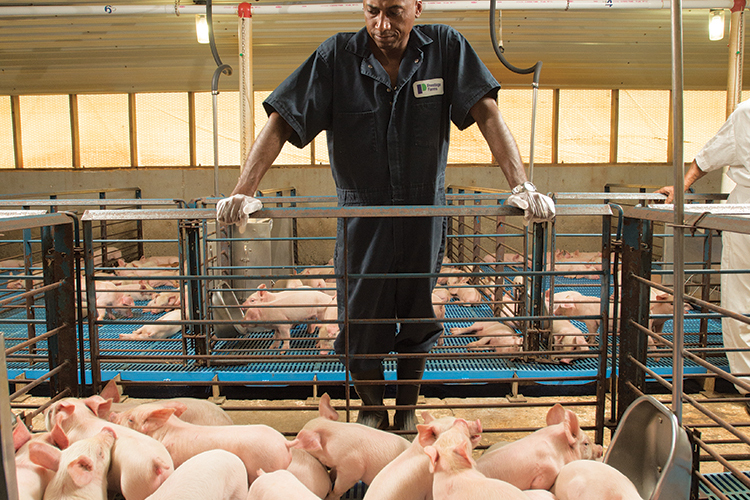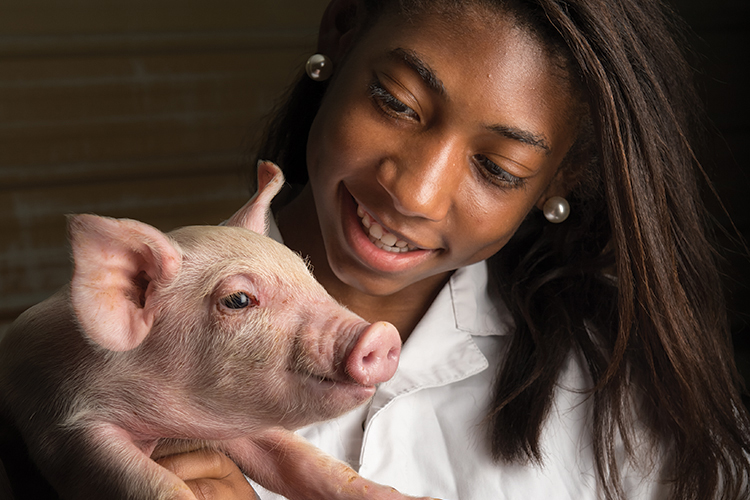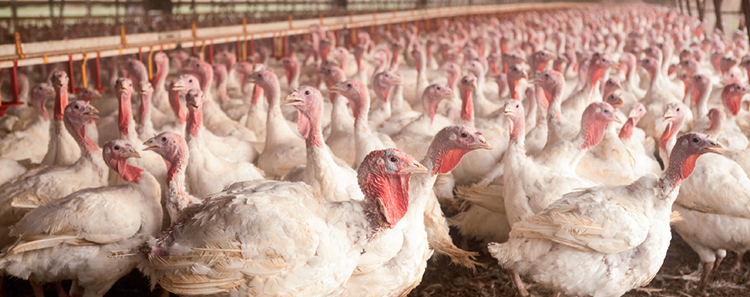Home > North Carolina > North Carolina Ag Education > Advancing Animal Agriculture in North Carolina
Advancing Animal Agriculture in North Carolina
In partnership with: North Carolina Department of Agriculture & Consumer Services

A leading state in animal agriculture, North Carolina has transitioned in recent decades from a crop farm state to a livestock farm state with pork and poultry leading in production value. Pork accounts for more than $2.5 billion in farm income in the state, while the poultry industry accounts for an estimated $5.1 billion.
Behind those impressive numbers are North Carolina’s farmers and the skilled care they provide for the animals they raise to feed their families and families across the world.

Animal Care And The Family Farm
James Lamb, a third-generation Sampson County hog farmer, took over the family farm as a teenager when his father passed away.
“I’ve probably been driving a tractor since I was 7 years old,” says Lamb, whose love of the farm and raising pigs eventually led him to study agricultural engineering at North Carolina State University (NCSU) and graduate in 1996 with five job offers. He decided to remain on the family farm and pursue hog farming large scale with Prestage Farms, which produces over 1.3 billion pounds of pork and turkey annually through its 450-plus farm families.
More than 15 years later, Lamb is still working as a nursery grower, receiving about 3,040 pigs for each eight-week term. In a year, he cares for around 20,000 pigs.
“When caring for the pigs, you want them to be as comfortable as possible,” he says. “A comfortable animal is healthier, so if they feel stressed, I’m stressed.”
![pork [infographic]](https://eadn-wc01-4177395.nxedge.io/wp-content/uploads/2020/02/Screen-Shot-2015-11-20-at-3.23.55-PM-2.jpg)
In order to provide the best care possible, Lamb is Pork Quality Assurance (PQA) certified and utilizes modern technology.
“I’m a big advocate of technology – anything that makes the pigs healthier, I’m for it. But no matter the technology you have, it’s always good to have your eyes on things.”
Also contributing to the farm’s success is Lamb’s family, including two daughters, who may one day inherit the farm.
“I always valued the lessons learned growing up on the farm. It’s hard work, but the ethics and morals help people throughout life, no matter where their paths lead.”

Poultry Pride
Brad West’s family has a long history of farming. A third-generation farmer and a graduate of NCSU, West has been raising turkeys for 16 years, most recently for Butterball.
“The challenge of taking a small bird, raising it to market age and seeing the finished product is what I like the most,” West says.
The West family owns three farming operations: a brooder farm with 55,000 turkeys, a natural ventilation farm with around 18,000 birds and a tunnel ventilation farm with 28,000 birds.
As the nation’s largest turkey producer, Butterball depends on family farmers. According to West, Butterball works closely with growers. The company understands that the taste consumers have grown to expect is achieved through every aspect of caring for the birds, from nutritious food to a clean, comfortable environment.

“Butterball also has great veterinarians, so they can diagnose and treat any problems that arise,” he says.
The rise of meat consumption around the world is good news not just for North Carolina’s pork and poultry industries, but also for the state’s beef producers. With approximately 19,000 beef cattle operations – located throughout the state’s 100 counties – the beef cattle herd is estimated at more than 360,000.
Meanwhile, an estimated 500 dairy farms with more than 45,000 cows contribute more than $165 million to the state’s economy.



